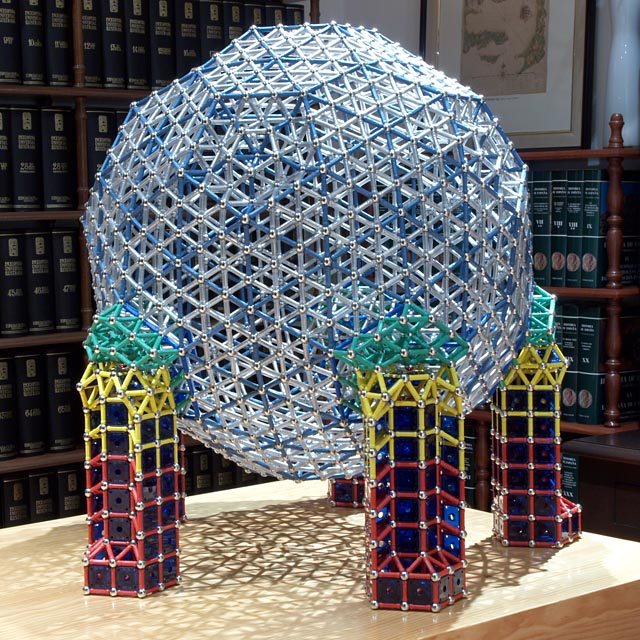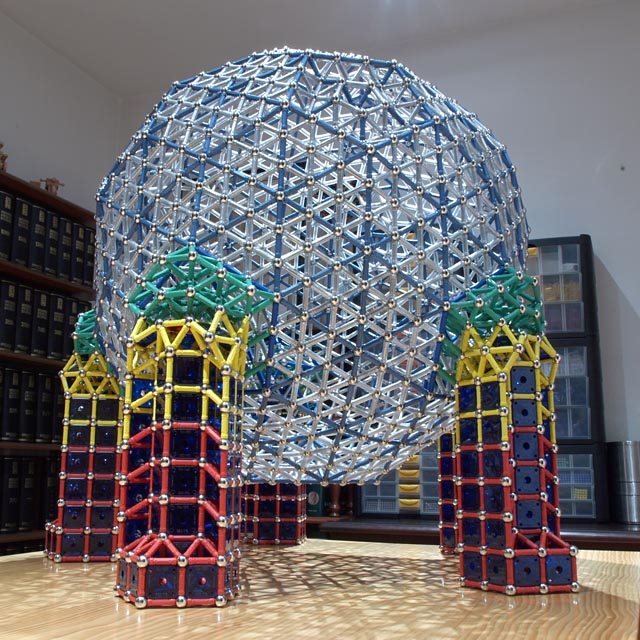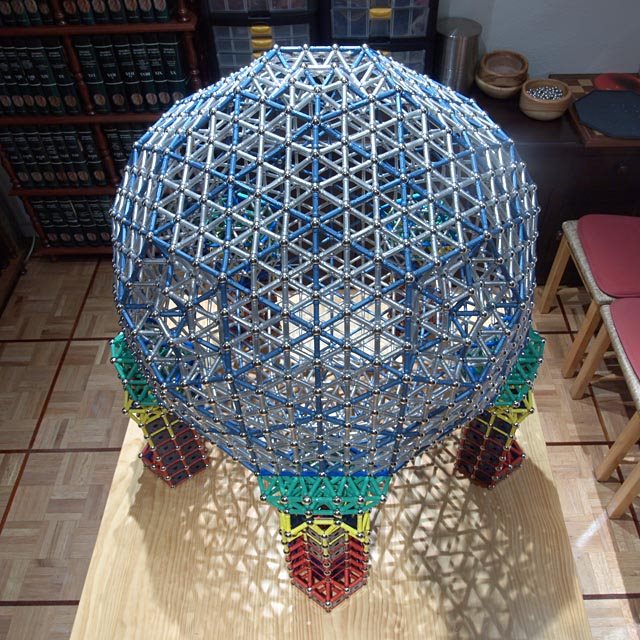Pseudogeodesic sphere to scale 3
We build this sphere in the same way as the double-scale sphere, on five supports:
The columns are made of double-scale pentagonal prisms, although they are partially truncated in order to save rods. They end up in a double-scale pentagonal antiprism (also incomplete) with a «capital» made of triple-scale (incomplete) pentagonal pyramids similar to the one used in the double-scale sphere, although this one is more reinforced:
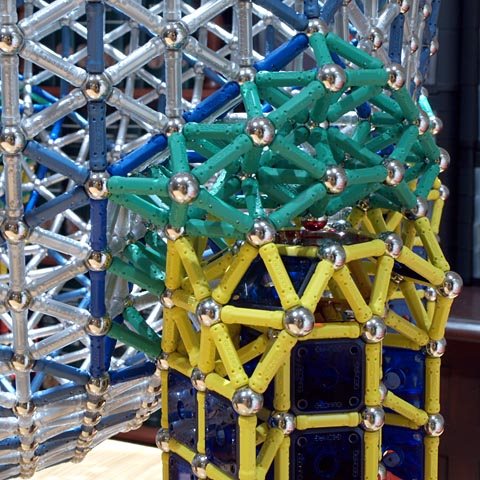
Pseudogeodesic sphere to scale 3 on five supports, capital of a column
|
The most difficult part in this construction is getting the columns in their correct place precisely enough, and keeping them there during the first building stages. The weight of the hexagons which join the columns one another tends to displace them towards the center, which in turn would deform the lower sections of the sphere vertically.
In this case, the problem has been solved by using an auxiliary, temporary structure for the hexagons which join the columns. This structure makes them rigid, and simultaneously keeps their vertical diameter slightly folded by an angle very close to the required one. When all five rigidified hexagons are in their place, the columns also are. The auxiliary structure is made of six triangular cupolas placed as shown in this picture:
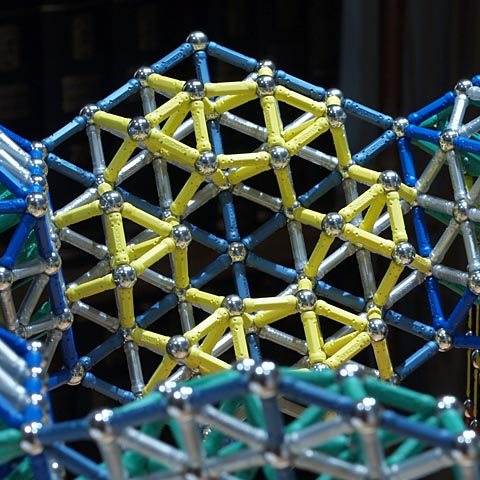
Pseudogeodesic sphere to scale 3 on five supports, auxiliary structure 1
|
The folding angle of each hexagon is fixed by four horizontal rods joining the cupolas which flank its vertical diameter, two to each side.
In order to build now the lower part of the sphere, we find that the lower vertices of the hexagons, which must be joined by segments made of six rods, should be closer one another than they are. If we remove six rods from the pair of joint cupolas on the lower part of each hexagon (see the following picture) we will be able to curve up those vertices so that they can be joined. Once they are, the lower section of the sphere can be finished easily.
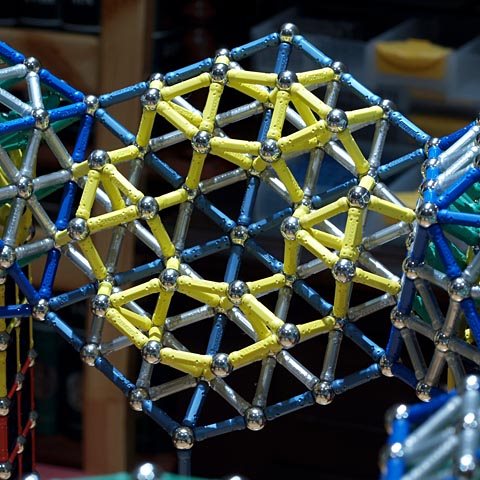
Pseudogeodesic sphere to scale 3 on five supports, auxiliary structure 2
|
A similar situation is found when we begin to build the «equator» of the sphere (the row of ten hexagons to be built on top of which we have until now): the upper vertices of the five joining hexagons are too far away from the upper vertices of the columns, to which they must join through a scale-3 rhombus. Symmetrically removing six rods from the upper pair of joint cupolas in each hexagon will allow us to curve and join them. We removed the remains of the auxiliary structure after completing the equator.
In the following stage, five pentagons and five interspersed hexagons are built. The pentagons make the sphere to begin to curve towards the top. While completing this stage, the pentagons already built tend to fold too much, threatening the collapse of the whole construction. The auxiliary structure shown in this picture seemed to help:
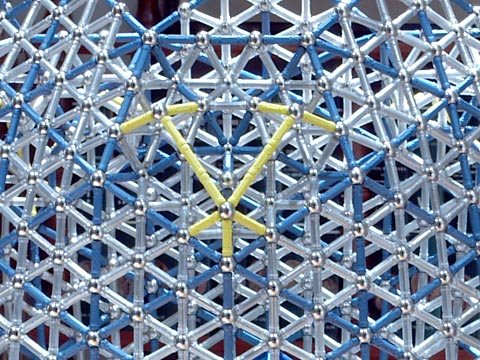
Pseudogeodesic sphere to scale 3 on five supports, auxiliary structure 3
|
The importance of controlling the polarity cannot be stressed too much for this construction. Of the total 1082 vertices of the sphere, 1070 have six rods, and must be neutral. The remaining 12 vertices are in the center of the 12 pentagons; each one has five rods which must, of course, be as balanced as possible between both poles: 2 and 3. At certain positions, an only ill-balanced vertex can be fatal.
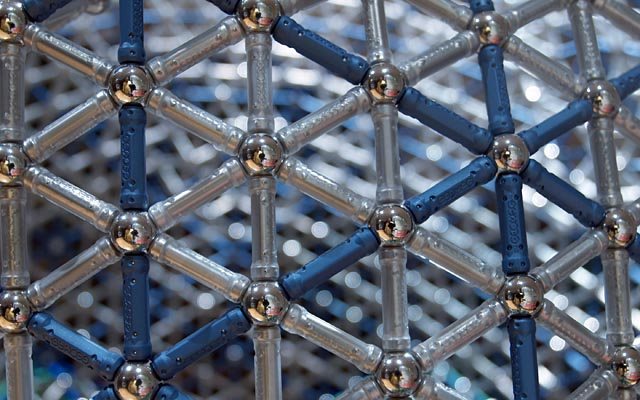
|
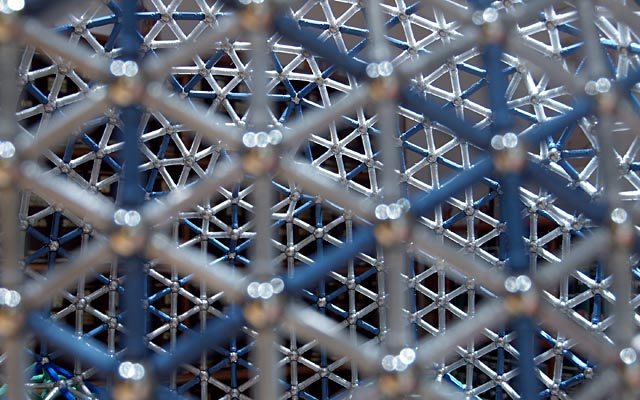
|
